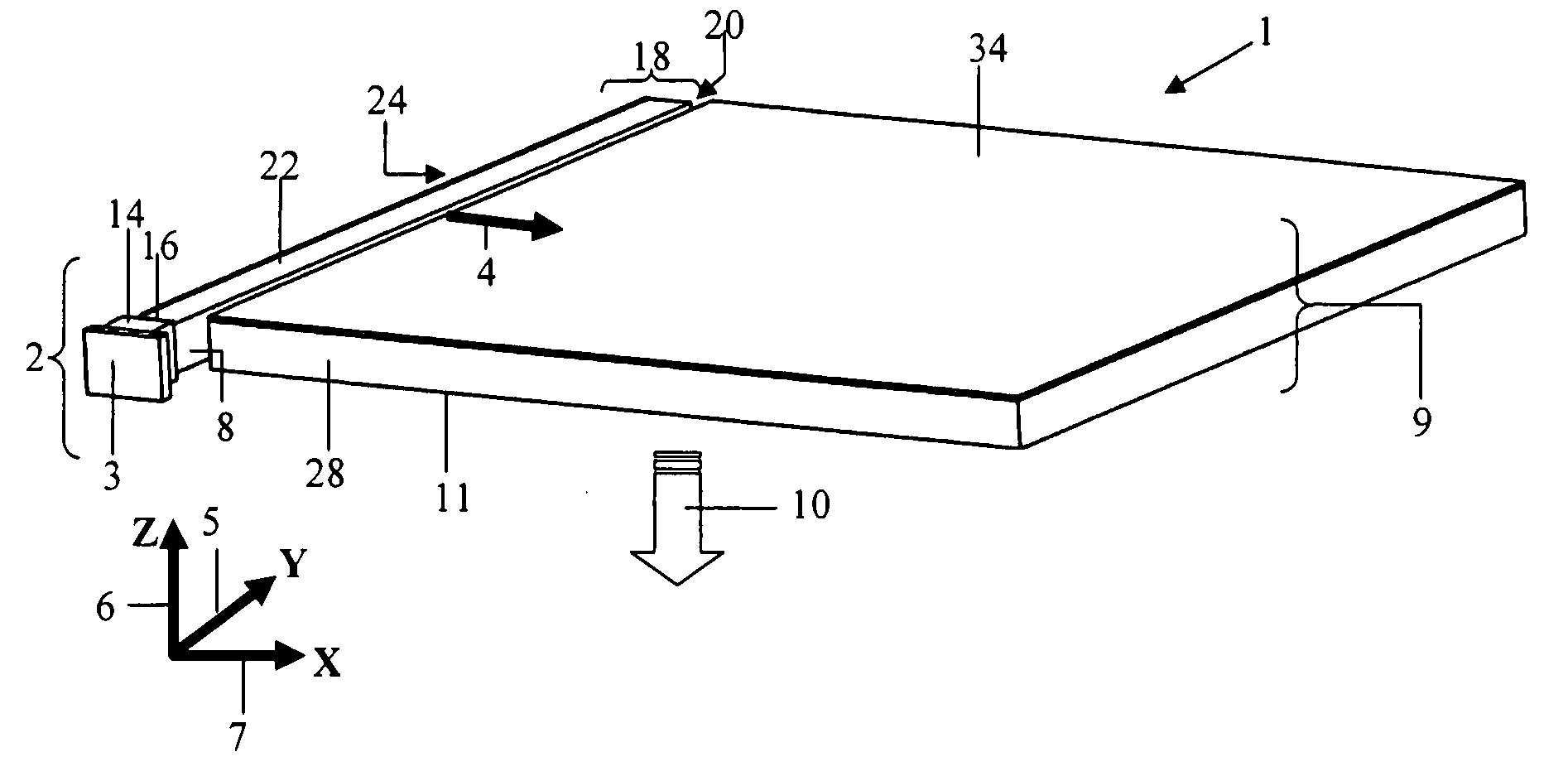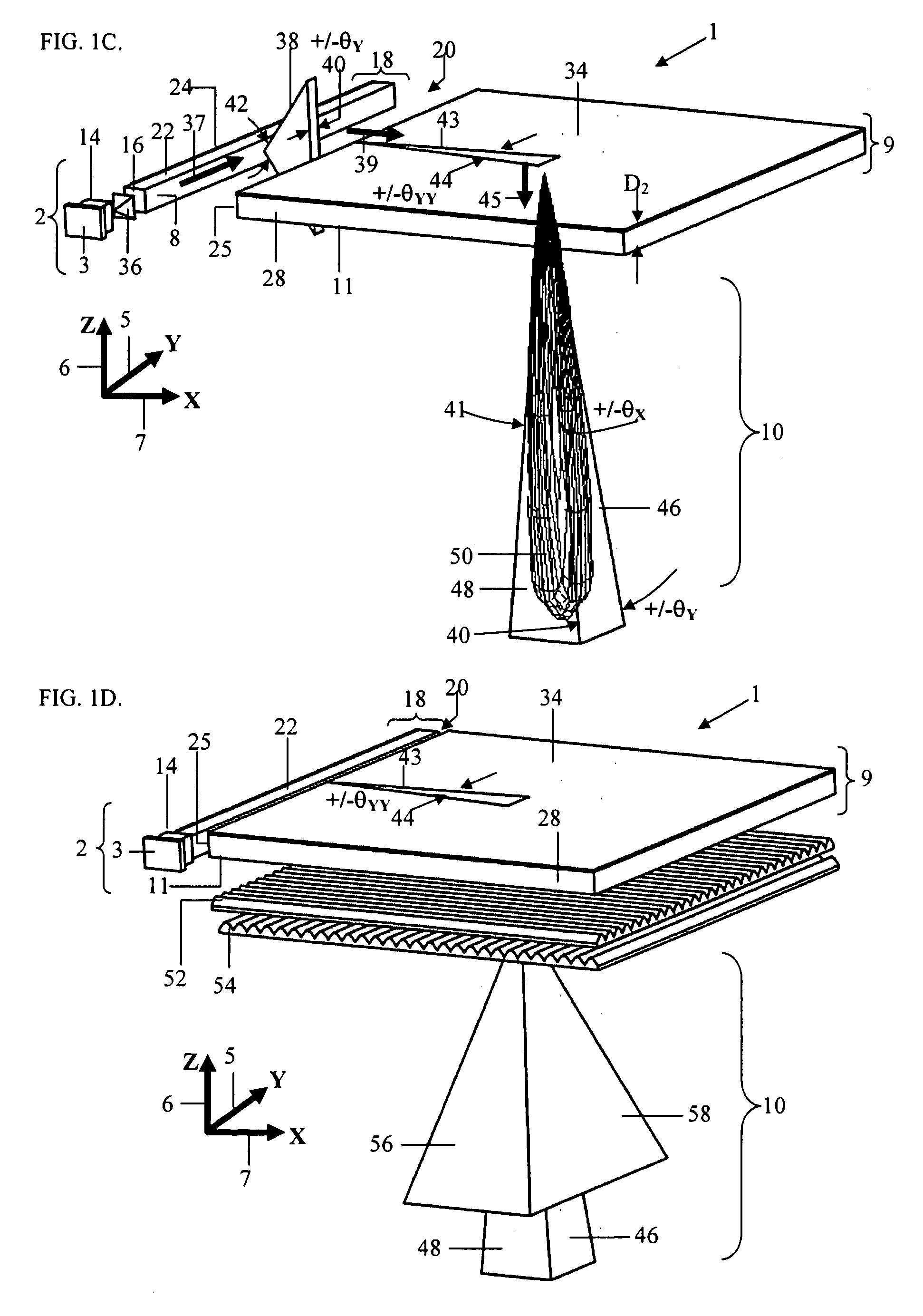Thin illumination system
- Summary
- Abstract
- Description
- Claims
- Application Information
AI Technical Summary
Benefits of technology
Problems solved by technology
Method used
Image
Examples
Embodiment Construction
[0170]An optical system 1 constructed in accordance with one principal form of the thin-profile illumination invention is indicated generally in the schematic perspective shown in FIG. 1A and in the exploded perspective shown in FIG. 1B. This form of the present invention collects the light from a wide angle plane emitter (e.g., and LED), uses a thin light guiding bar to provide a strong degree of collimation in one meridian, and then further processes this light with an equally thin light guiding plate that retains the strong degree of pre-collimation in the first meridian while adding an equally strong degree of collimation to the light in a second meridian orthogonal to the first, so as to produce a uniform source of doubly collimated far field output light from a significantly enlarged output aperture. The light distributing engine 1 so illustrated consists of two subcomponents, a light emitter 2 (preferably an LED-based light emitter, or LED light emitter) whose output light 4 ...
PUM
 Login to View More
Login to View More Abstract
Description
Claims
Application Information
 Login to View More
Login to View More - R&D
- Intellectual Property
- Life Sciences
- Materials
- Tech Scout
- Unparalleled Data Quality
- Higher Quality Content
- 60% Fewer Hallucinations
Browse by: Latest US Patents, China's latest patents, Technical Efficacy Thesaurus, Application Domain, Technology Topic, Popular Technical Reports.
© 2025 PatSnap. All rights reserved.Legal|Privacy policy|Modern Slavery Act Transparency Statement|Sitemap|About US| Contact US: help@patsnap.com



